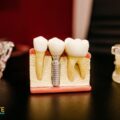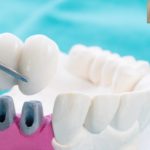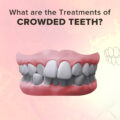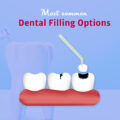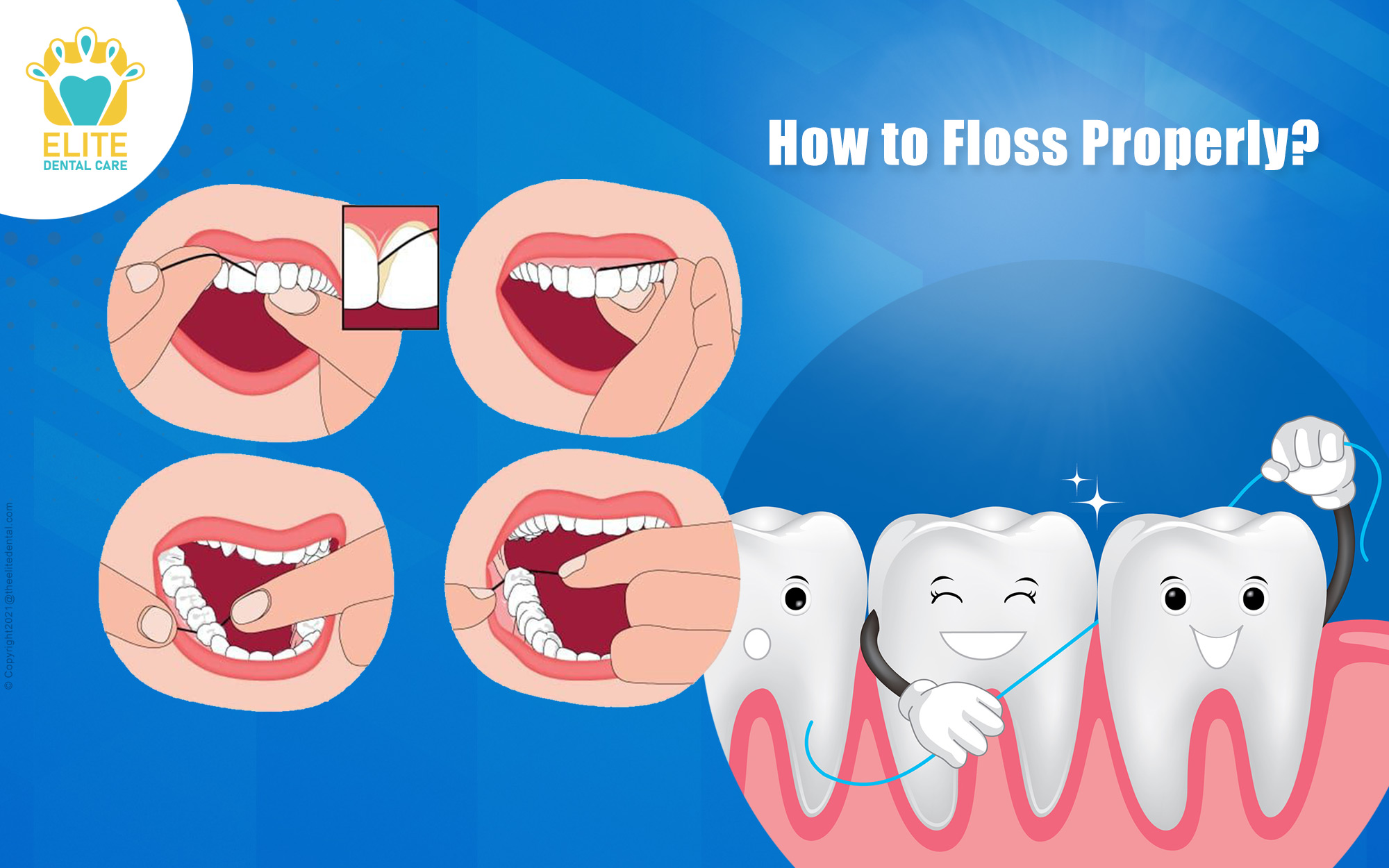
flossinghygiene tips
edental
16 February 2022
How to Floss Properly?
Flossing is an important element of the tooth-cleaning procedure because it eliminates plaque from between teeth and at the gum line, which is where tooth decay and dental problems commonly start. Plaque is made up of bacteria that graze on leftover food and sweets in your mouth and produce acid that eats away at the external shell of your teeth, producing cavities or gum disease.
One of the most important parts of excellent dental hygiene is keeping proper oral hygiene. Brushing your teeth and flossing your teeth are two of the most generally advised strategies for keeping your gums and teeth healthy.
Tooth flossing is commonly suggested by dentists; yet, little is known about the advised flossing method.
Why is tooth flossing suggested?
The mouth cavity is a great place for germs to thrive. These bacteria mix with bits of food as quickly as it is ingested, leading to the creation of plaque. If plaque is not removed, it can progressively collect in the gaps between teeth, forming hard deposits known as tartar.
Plaque and tartar both cause dental issues such as gum soreness, which leads to gum diseases such as gingivitis and periodontitis. Plaque lodged between teeth causes a slew of dental problems, including:
- Dental decay, often known as tooth cavities, causes the tooth enamel to degrade.
- Gingivitis is defined as gum inflammation that results in bleeding from the gums.
- Periodontitis is a disease that damages the tissues that support teeth, such as ligaments and bone.
- A general loss in oral health can emerge as a variety of symptoms such as pus development, soreness, and the inability to masticate food.
- Deteriorated dental health not only adds to the aforementioned oral diseases, but it can also result in serious medical disorders such as heart illness and premature delivery.
Tooth flossing is extremely crucial for those who have a narrow interdental (gap between two neighboring teeth) spacing, because there is a greater risk of trapping bits of food that are not easily removed by rinsing or brushing.
What are the procedures for flossing?
To floss your teeth properly, go through this step-by-step tutorial.
Flossing guidelines
- Cut a piece of dental floss about 16 – 22 inches long in half. To grasp the floss properly, wrap the majority of it around both of your middle fingers. Only around 1 to 2 inches of floss should be left for your teeth.
- Then, using your thumbs and index fingers, pull the floss straight.
- Insert the dental floss between two teeth. Gently move the floss up and down the tooth, pressing it on both surfaces. Do not insert the floss into your gums. As a consequence, your gums may be scraped or damaged.
- Rep the procedure as you travel from tooth to tooth. Use a fresh segment of floss for each tooth.
What is the best technique to floss when wearing braces?
Flossing with braces is more difficult and time-consuming than flossing without braces. Allow yourself 10 to 15 minutes to floss your teeth if you use normal floss. Use waxed floss for this procedure, since it is less likely to rip and become trapped in your braces.
Directions for flossing braces
- Take around 18 to 24 lengths of waxed dental floss and cut it in half.
- Step in front of a mirror to ensure that the floss is going where it should.
- Begin by wrapping the floss around your teeth and the main thread. Wrap the floss’s free threads over your index fingers to make it easier to maneuver.
- Press the floss as lightly as possible between the two teeth. The floss should then be raised and lowered to the edges of both teeth.
- Form an upside-down U with your floss when focusing on your upper teeth. To accomplish this, work your way up the edge of one tooth until you reach the gumline. The floss should then be sled along the side of the opposite tooth.
- Remove the floss with care and slowly unthread it from under the wire. If you pull the floss out of your tooth, you may dislodge a wire.
Rather than waxed floss, additional flossing choices for people with braces include a Waterpik, a sort of water flosser, or a floss threader, a little gadget that lets you thread floss beneath your braces. Both can help you save time when flossing.
When is it appropriate to floss?
Understanding when to floss is also important for optimal dental health. Some people have a habit of cleaning their teeth first, followed by flossing. However, it is typically advised that you floss before brushing your teeth. Flossing aids in the removal of food and plaque lodged between your teeth, whereas brushing eliminates these bits from your mouth.
If you brush first and then floss, food and plaque will linger in your mouth until the next time you brush.
Dental floss types
Dental floss is available in a range of colors and designs. The type of floss that is ideal for you is determined by your choices, the amount of space between your teeth, and whether or not you have braces or bridges. Some dental floss is simpler to use in larger places, while others are easier to use in smaller spaces.
Dental floss comes in a variety of styles, including:
Dental tape– This form of dental floss is wider and plain like tape, making it easier to use if you have braces, gaps, or vast areas between your teeth.
Regular floss– This is a tiny nylon thread that may be inserted between the teeth. It is available in flavored or unflavored varieties, as well as waxed or unwaxed. If your teeth are crowded or connected enough, wax-coated dental floss might help you get in between them.
Exceptional floss– This floss threader is suitable for use with braces, bridges, and gaps. It is made up of three parts: a hardened end for flossing beneath devices, spongy floss for cleaning around your devices, and regular floss for removing plaque beneath your gum line.
